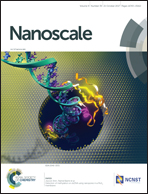Aluminium nanopillars reduce thermal conductivity of silicon nanobeams
Abstract
In search of efficient thermoelectric nanostructures, many theoretical works predicted that nanopillars, placed on the surface of silicon membranes, nanobeams, or nanowires, can reduce the thermal conductivity of these nanostructures. To verify these predictions, we experimentally investigate heat conduction in suspended silicon nanobeams with periodic arrays of aluminium nanopillars. Our room temperature time-domain thermoreflectance experiments show that the nanobeams with nanopillars have 20% lower thermal conductivity as compared to pristine nanobeams. We discuss possible explanations of these data, including coherent effects, and conclude that the thermal conductivity is reduced mainly by phonon scattering at the pillar/beam interface due to the intermixing of aluminium and silicon atoms, as supported by the transmission electron microscopy. As this intermixing does not only reduce thermal conductivity but may also increase electrical conductivity, these nanostructures are exceptionally promising for thermoelectric applications.



 Please wait while we load your content...
Please wait while we load your content...